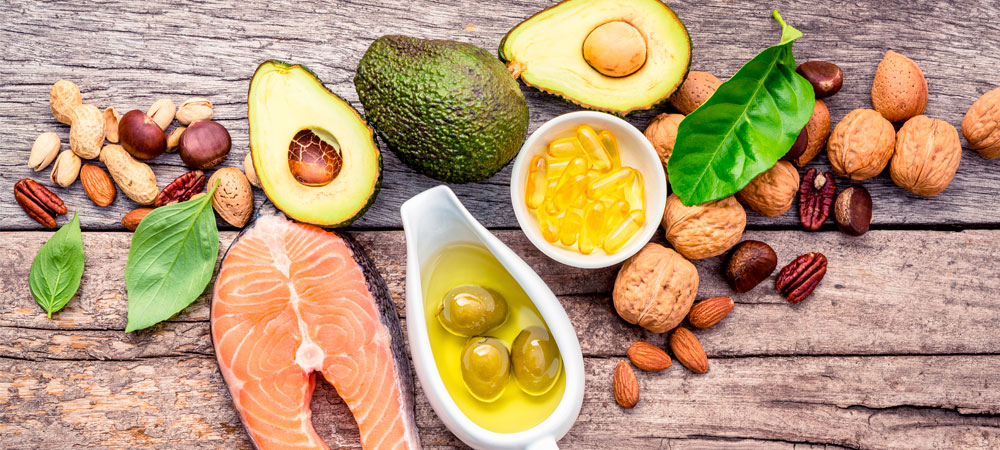Table of contents
Today’s nutritional requirements reflect a long-lasting evolutionary process adapting genetic patterns to life circumstances. However, since agricultural food production appeared 10.000 years ago and Industrial Revolution started, genetic adaptation produced only minor alterations, leading to the fact that we are nearly identical to our late Palaeolithic ancestors (Eaton et al., 1997).
Therefore, their nutritional patterns are still relevant for our wellbeing. This can be especially seen in the consumption of Omega-3 fatty acids. Since epidemiological studies revealed in the late 1970s, that Inuit’s from Greenland had substantially reduced rates of acute myocardial infarction compared with Western control subjects extensive research on Omega-3 fatty acids were performed.
Based on analyses of the content of unsaturated fatty acids in wild plants and wild animals, it becomes clear that human evolutionary development was based on a diet that was rich in Omega-3 fatty acids. This resulted in an intake ratio of Omega-6 to Omega-3 fatty acids of around 1-2 : 1. Unfortunately, led the industrial food production to an increased fat intake in daily calories and a significant change of ratio of Omega-6 fatty acids to Omega-3 in our nutrition.
Nowadays ratios between 10-20 to 1 can be found. It is important to emphasize that this has a significant influence on our health and well-being. Normally, the human metabolism can convert α-linolenic acid into long-chain omega-3 polyunsaturated fatty acids (PUFA) such as eicosapentaenoic acid (EPA) and docosahexaenoic acid (DHA). This happens only if α-linolenic acid is consumed in adequate amounts and in the correct ratio to Omega-6 fatty acids.
Long-chain Omega-3 PUFAs are related to a lower rate of incidence and death from cardiovascular heart disease. Additional, Omega-3 fatty acids have beside others a positive effect in the treatment and/or management of inflammatory diseases or are needed for the appropriate development of human brains and retina.
The significant change of ratio between Omega-6 to Omega-3 intake leads to a very limited conversion of α-linolenic acid to EPA and further to DHA. Therefore, the direct intake of long-chain PUFAs such as EPA and DHA should be envisaged. Fatty fish or fish oil represent normally a good source for long-chain Omega-3 fatty acids.
The traditional source of these kind of Omega-3 fatty acids represent fish oil from capture fishery. However, it is not so well known that these long-chain Omega-3 fatty acids are in short supply (Naylor et al., 2009).
Tocher et al. (2015, 2019) concludes that there exists a gap between supply and demand as there are not enough Omega-3 fatty acids available to satisfy human nutritional requirements, and aquaculture demand. Especially, aquaculture a major user of fish oil and provider of EPA and DHA represent a critical step in the value chain. Increased aquaculture production lead to an increased demand for fish oil resulting in rising prices due to limited supply. Capture fishery is not able to satisfy the increasing demand due to finite marine resources and overfishing.
Sprague et al (2016) compared for example fatty acid composition of over 3,000 Scottish Atlantic salmon farmed between 2006 and 2015. They found that the levels of EPA and DHA decreased in farmed Scottish Atlantic salmon whereas terrestrial fatty acids have significantly increased over this period as fish oil in fish feed is replaced by terrestrial oil.
Based on these analyses they concluded that the nutritional value of the final product is compromised requiring double portion sizes, as compared to 2006, to satisfy recommended EPA + DHA intake levels. Hamilton et al. (2020) calculates that the current supply of long chain polyunsaturated fatty acids (EPA, DHA) for human consumption is around 0.42 million ton per year and represents only around 30 % of real global demand. Taking into account that the current world population of around 7.7 billion people is forecasted to grow up to 9.7 billion in 2050 (United Nations, 2019) shows a further growing gap between EPA and DHA supply and demand thereby affecting human wellbeing.
Therefore, other alternatives must be investigated to supply long chain Omega-3 fatty acids. One source for Omega-3 fatty acids are microalgae grown autotrophically or heterotrophically. Considering circularity towards a circular bioeconomy, side and residual streams should be used as carbon source like waste carbon dioxide for autotrophic microalgae cultivation as investigated in the research project “Production and Valorisation of Microalgae Biomass” financed by the Spanish Ministry of Science and Innovation (Del Pozo et al., 2009).
Another approach is the European funded research project VOLATILE lead by TECNALIA focusing on the cultivation of heterotrophic microalgae to transform different type of biowaste streams into long chain omega-3 fatty acids beside other products, thereby contributing to establishment of a circular bioeconomy and helping to close the gap between Omega-3 nutritional demand and supply.

